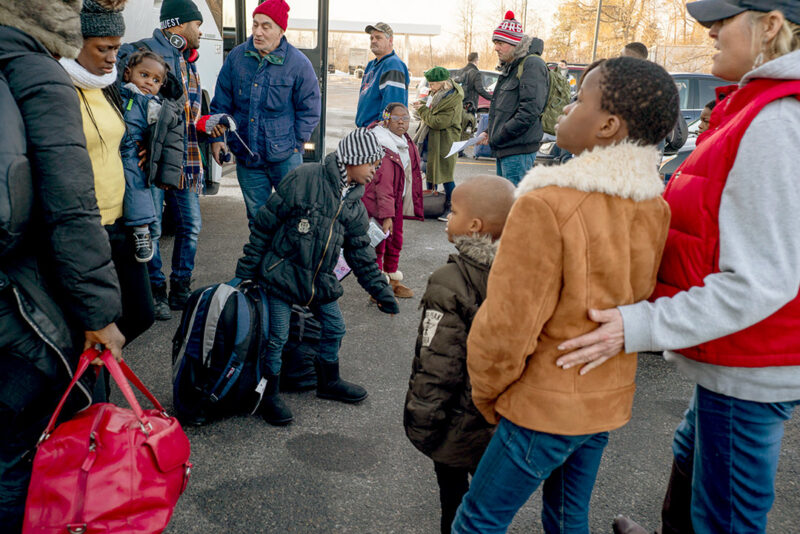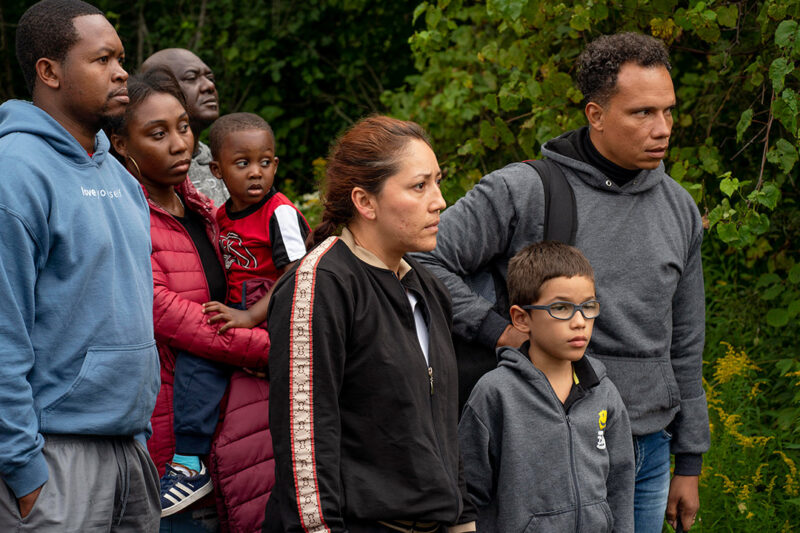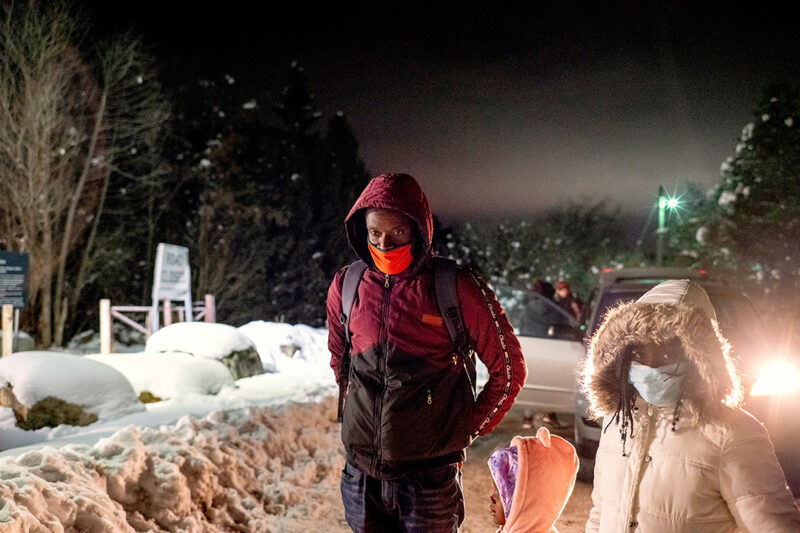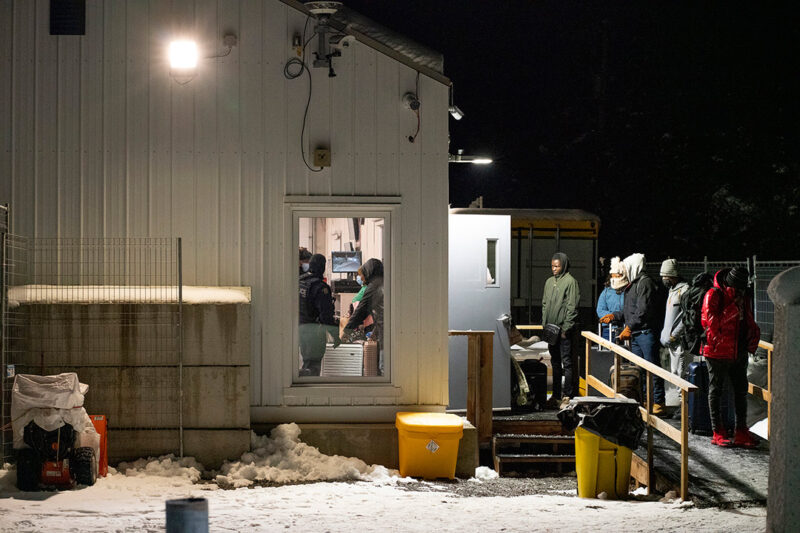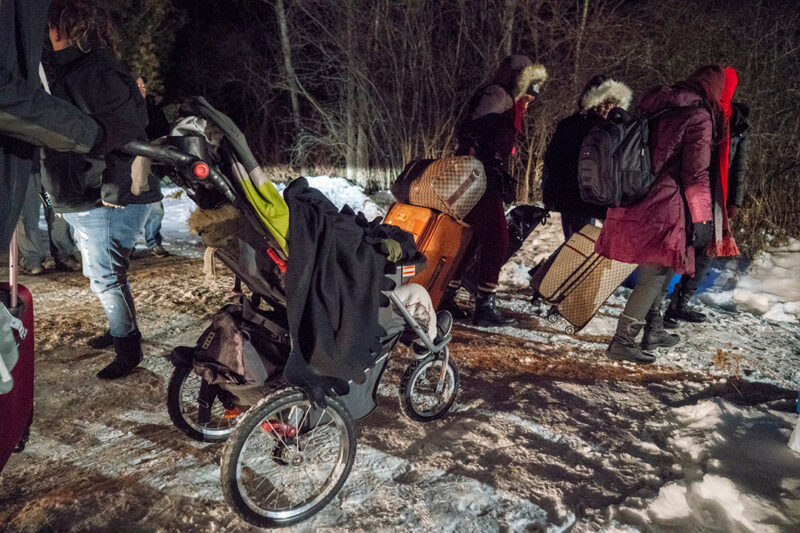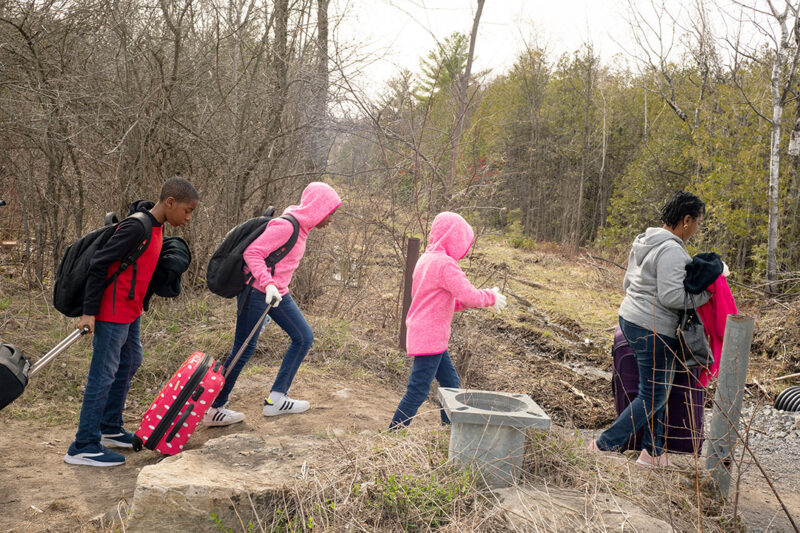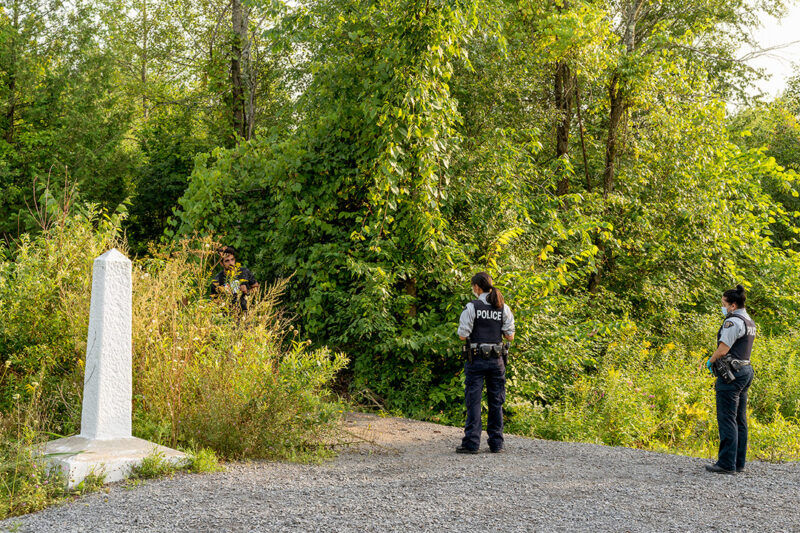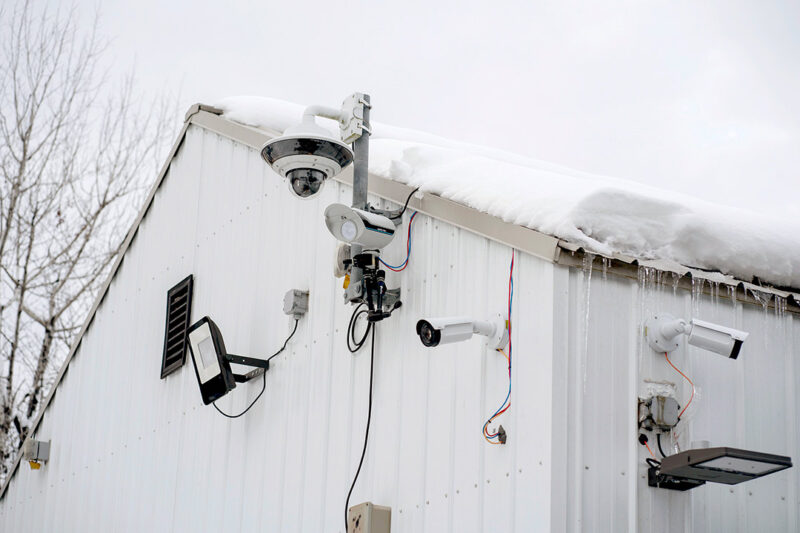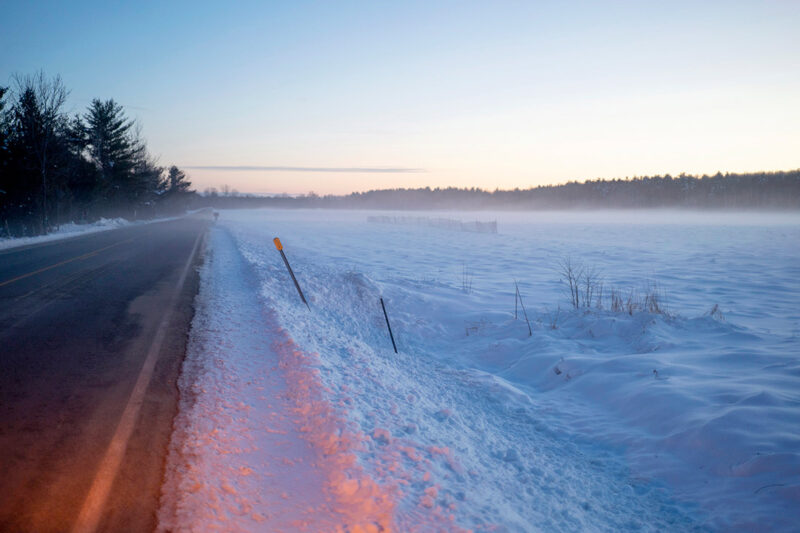[October 18, 2023]
By Sophie Mangado
During her first trip to Roxham Road, in 2018, Toronto photographer Ruth Kaplan knew she was facing a complex reality that stretched beyond the few metres of the crossing from the United States to Canada. The conjuncture of forces at work was the first thing she noticed. She addressed the migrants, the volunteers helping them, the taxi drivers, the police officers, and the territory itself as so many entities that would never have come together without “Roxham.”
She found the unique concentration of human, political, geographic, and social issues striking. “The drama of each person’s crossing carries the potency of this heightened moment echoing global migration issues but manifested on a small, manageable scale, making it a unique border site,” she summarized in the text that she wrote for her series The Crossing.
Choosing to use the American side as her observation point, Kaplan returned to the area dozens of times up to spring 2023, when the Canadian government closed the Roxham Road irregular border crossing. The result is a photographic essay that combines images with an explicit narrative and conceptual proposals that seek to lay bare the intangible. The procedure at the border takes a handful of minutes. What comes before that point piqued Kaplan’s curiosity, especially because what she was not allowed to see much at the specific moment of the crossing.
Quite early in the process, Kaplan became interested in the final kilometres travelled by migrants who had come from all over the world to enter Canada via Roxham Road. Spending time in Plattsburgh, the stopping-off point for the bus from New York, she got to observe a fleet organized by taxi drivers who drove the asylum seekers to the end of Roxham Road. And she understood that they were an important part of the story.
The road became an important component of The Crossing. Kaplan regularly shared taxis with migrants transiting between Plattsburgh and the border. During this half-hour trip, she caught the drivers’ outlook on this part of hyper-mediatized history.
Many have focused on the migrants who made this unusual passage. Kaplan also wondered about the imprint left on the border community by their presence. The only conflicts she observed requiring intervention by the local police took place between taxi drivers. This region of northern New York State deals with its share of poverty. A single family – with which Kaplan has formed ties over the years – has a stranglehold on the financial gain to be gleaned by the trips to and from the border.
Through these shared kilometres, we become familiar with the people involved. When the language barrier made talking difficult, Kaplan used looks and nonverbal communication to check whether she had their tacit agreement to photograph them. If discomfort was expressed, she withdrew. In some cases, she was allowed to take a picture in which the face didn’t appear. In others, her subjects were less reticent and she was able to immerse herself in the group, opening the taxi door to make us witnesses in our turn.
The story excerpts that accompany the photographs come from asylum seekers already settled in Canada; Kaplan met them in other contexts, always related to her overall work on migrations. Descriptive, minimalist, and often deliberately devoid of emotion, these narratives, juxtaposed against the images of what precedes the crossing, offer a contrast with the sense of confusion that reigns as the crossing is made.
With the restraint that also guided her approach to the Bathers series in the 1990s, Kaplan doesn’t make presumptions about the vulnerability of the subjects she photographed. Where and when will they be able to settle down rather than being in a state of waiting or moving? Without denying the fragility of the situation, she wants to avoid a despondent and reductive view of the migrants.
With this long-term series, Kaplan pursues her exploration of the issues and tensions at work in migration and exile – themes that resonate with her own parents’ history, augmenting her particular sensitivity to the subject. Translated by Käthe Roth
Ruth Kaplan is a documentary photographer based in Toronto. Her work explores social behaviour manifested through physicality, in a wide variety of rituals, and more recently issues concerning immigration and status refugees. In addition to her background in editorial photography, Kaplan has exhibited internationally and received numerous grants and awards. She is an instructor at Toronto Metropolitan University and OCAD University. She is represented by the Stephen Bulger Gallery.
Sophie Mangado is a journalist. She writes for young adults and researches documentary projects. She is particularly interested in subjects involving social justice and education. She coordinates a collective of photographers and journalists dedicated to introducing multimedia narrative tools to marginalized people to encourage them to speak out in the public space.

